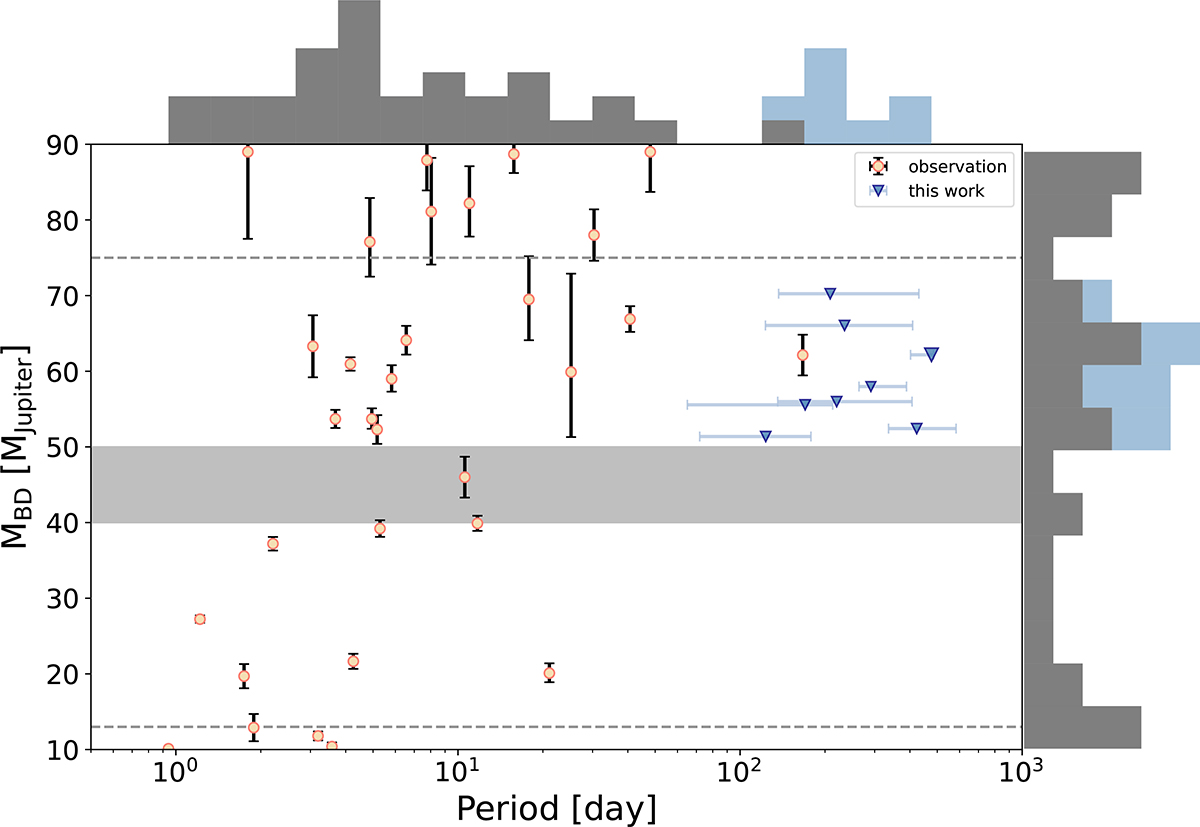Fig. 4.

Download original image
Period-mass distribution of close MS−BD binaries inferred from close WD−BD binaries using population synthesis technique. We have also overplotted the known transiting A-F-G-type MS−BD binaries with precise BD mass measurements (excluding those only having M sin i measured) from the literature (Pont et al. 2006; Johns-Krull et al. 2008; Winn et al. 2008, 2009; Deleuil et al. 2008; Hébrard et al. 2008; Hellier et al. 2009; Triaud et al. 2010, 2013; Borucki et al. 2011; Anderson et al. 2011; Ford et al. 2011; Bouchy et al. 2011a,b; Siverd et al. 2012; Moutou et al. 2013; Díaz et al. 2013, 2014; Parviainen et al. 2014; Ma & Ge 2014; Bonomo et al. 2015; Csizmadia et al. 2015; Nowak et al. 2017; Bayliss et al. 2017; Hodžić et al. 2018; Zhou et al. 2019; von Boetticher et al. 2019; Carmichael et al. 2019, 2020, 2021; Persson et al. 2019; Šubjak et al. 2020; Mireles et al. 2020; Maire et al. 2020; Grieves et al. 2021; Benni et al. 2021; Acton et al. 2021; Stevenson et al. 2023). Progenitor systems are marked with blue triangles based on a αCE value of 0.3 except for ZTF J0038+2030, where a αCE value of 0.45 is used. The error bars illustrate the range of initial orbital periods based on all possible αCE. The gray-shaded area marks the lowest density area in the BDD proposed by previous studies.
Current usage metrics show cumulative count of Article Views (full-text article views including HTML views, PDF and ePub downloads, according to the available data) and Abstracts Views on Vision4Press platform.
Data correspond to usage on the plateform after 2015. The current usage metrics is available 48-96 hours after online publication and is updated daily on week days.
Initial download of the metrics may take a while.


